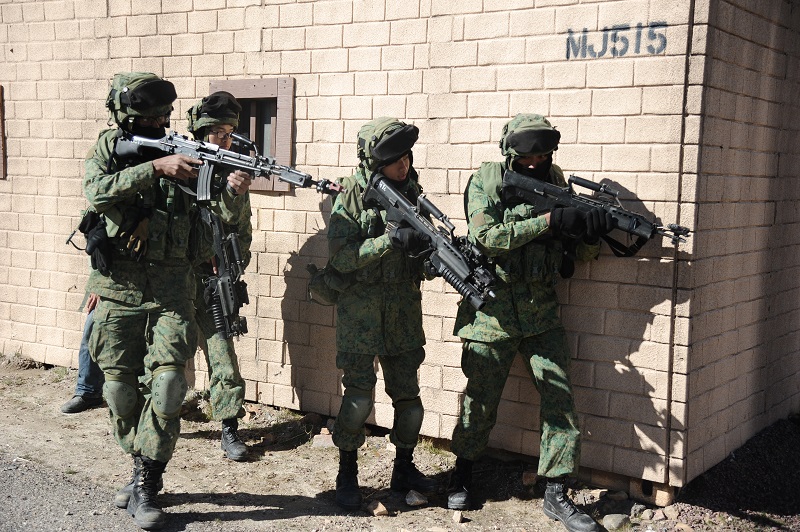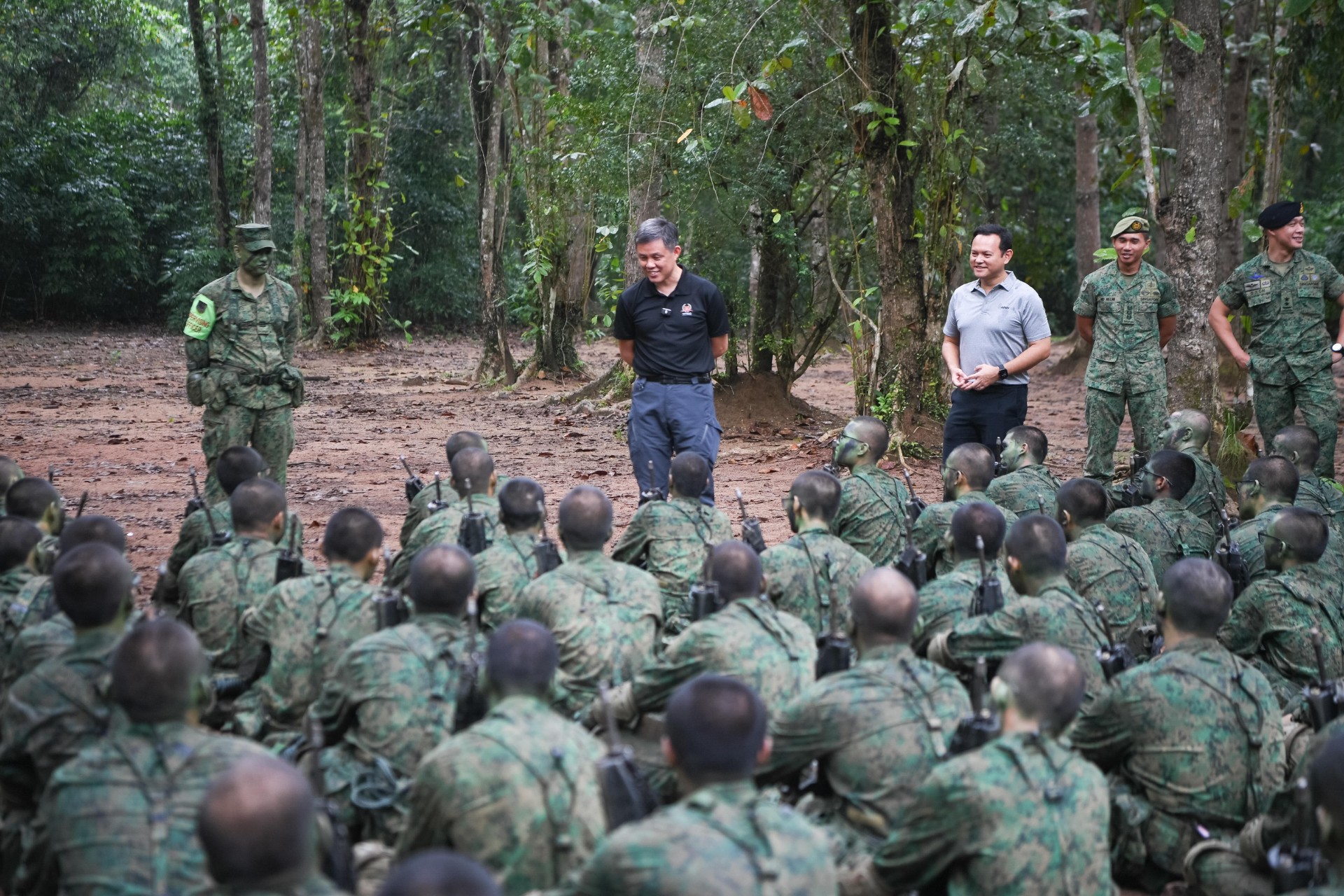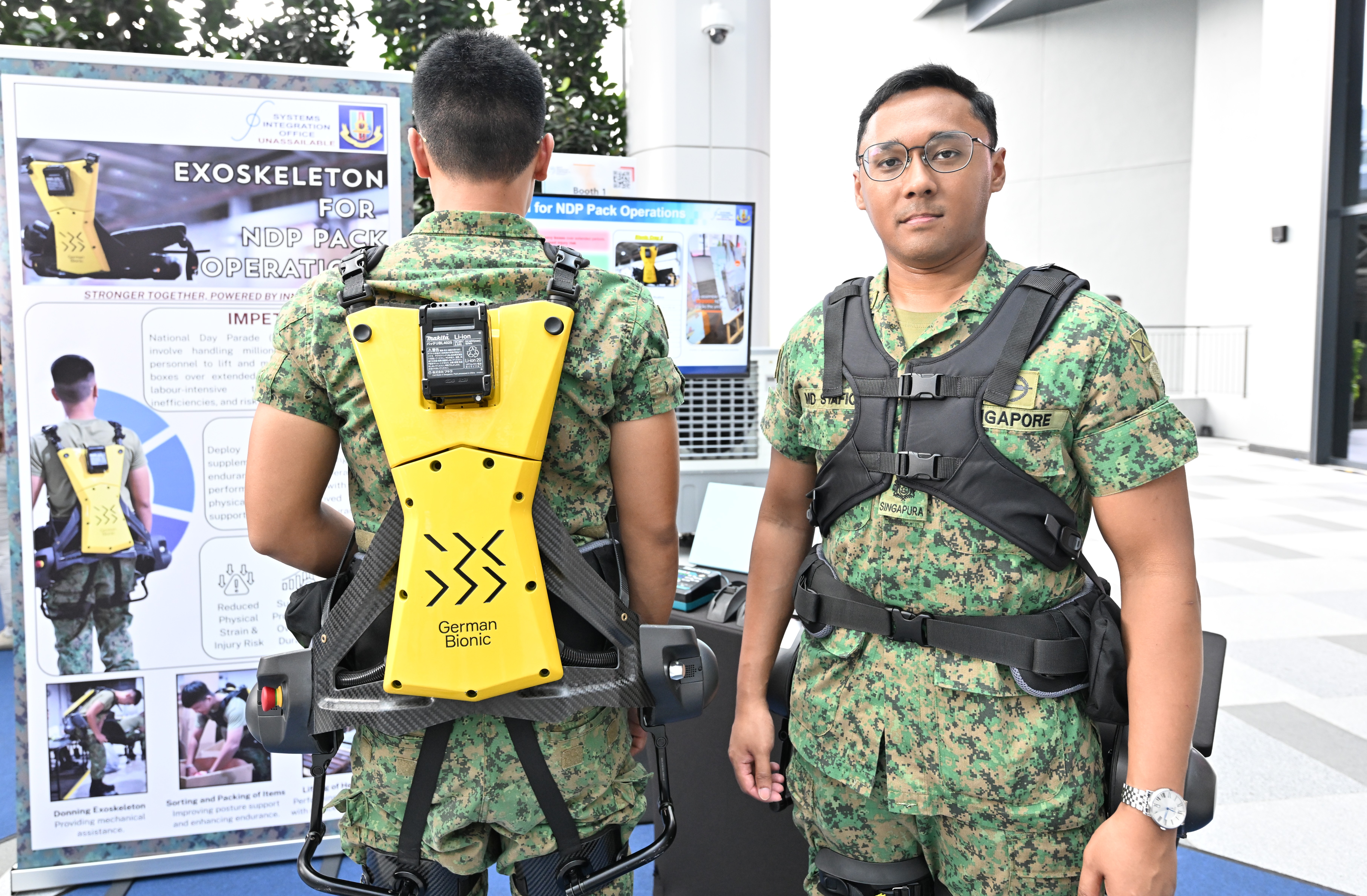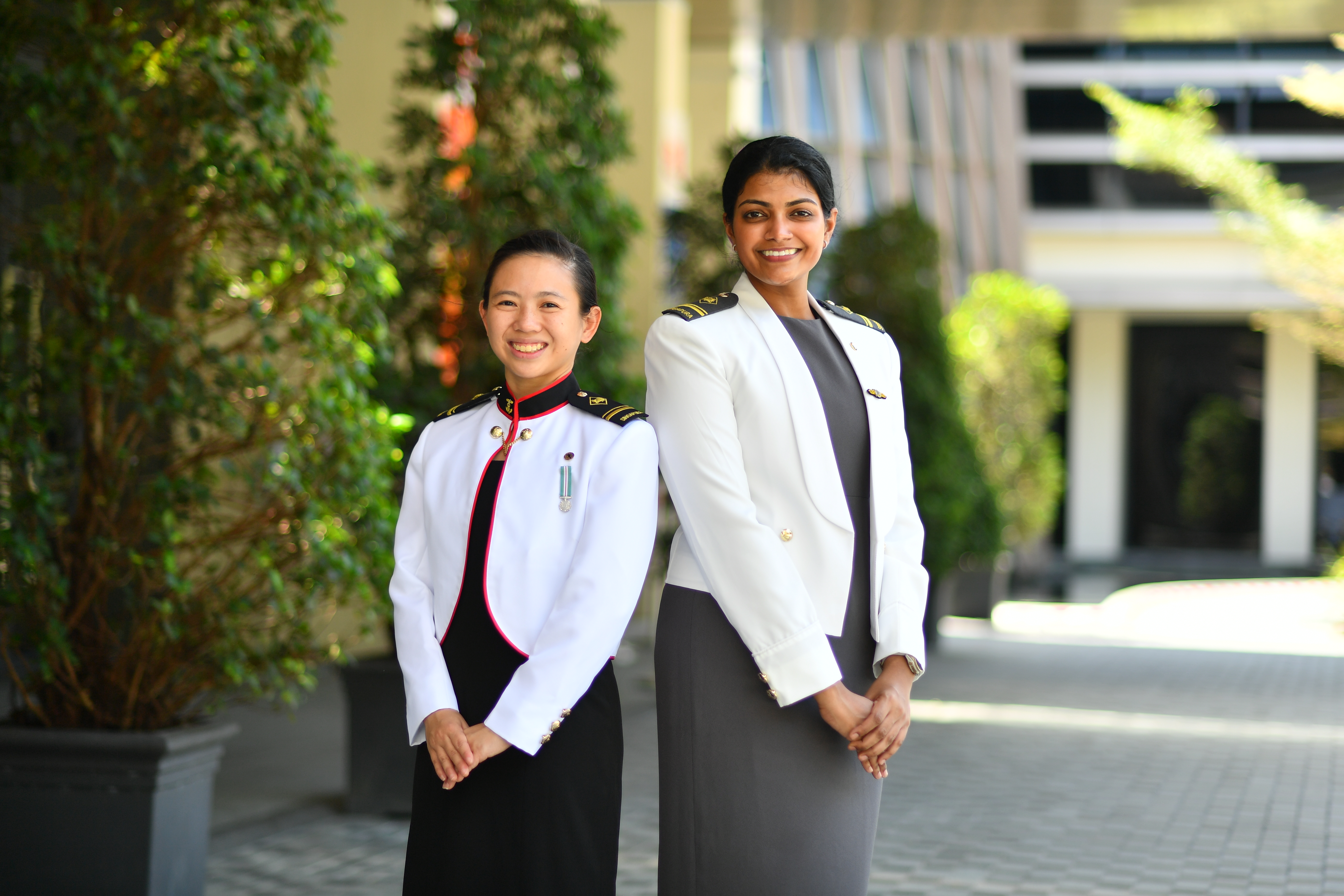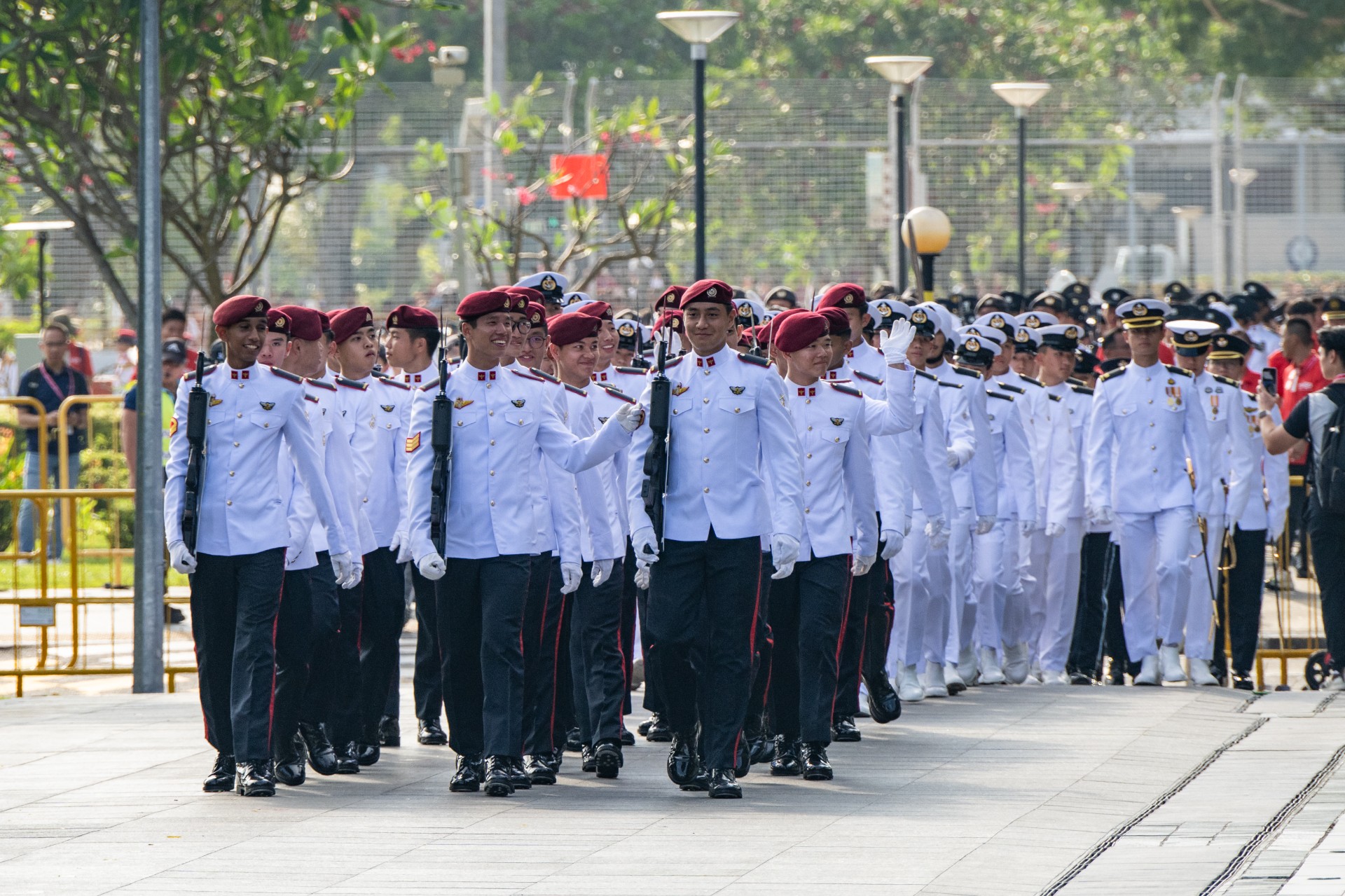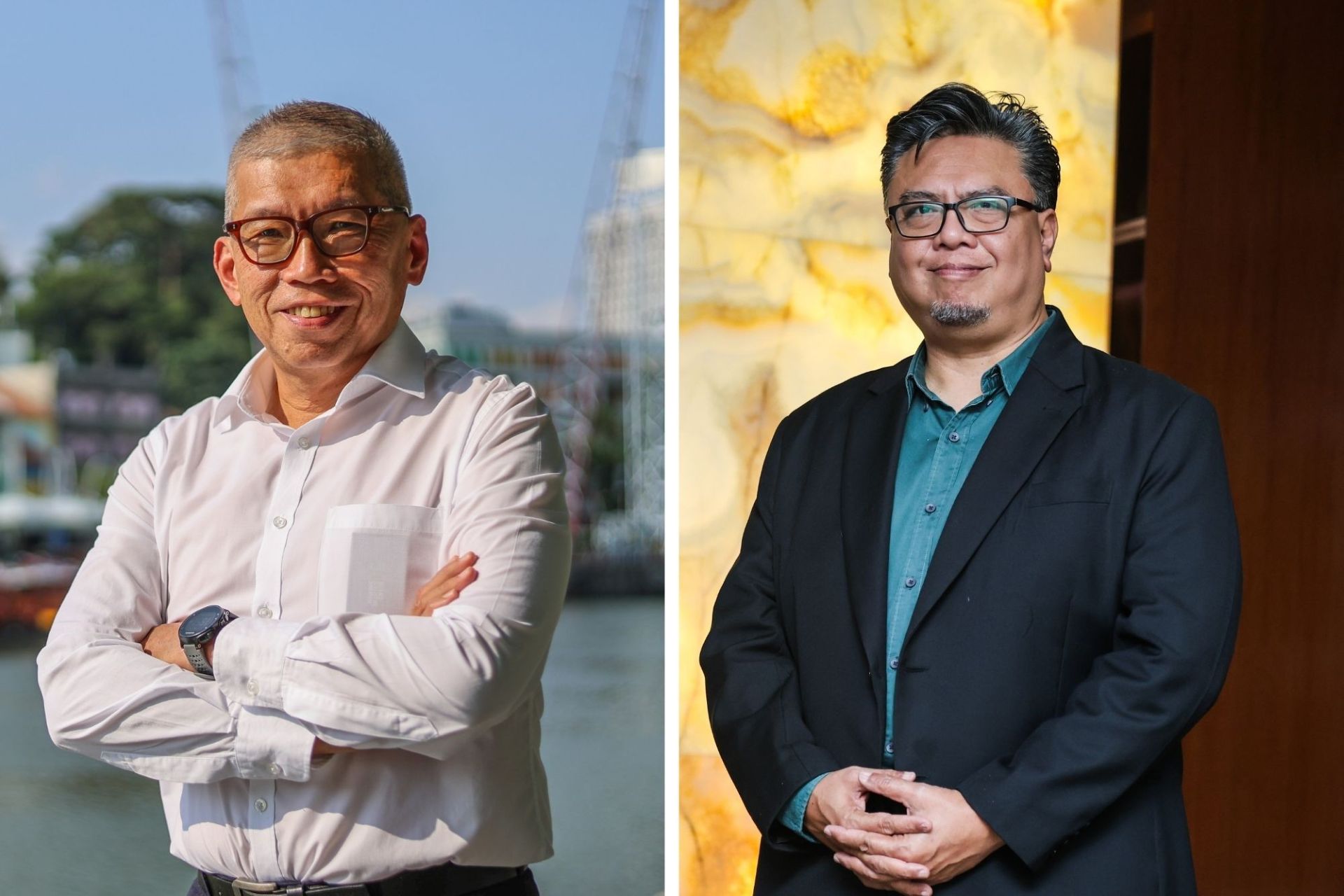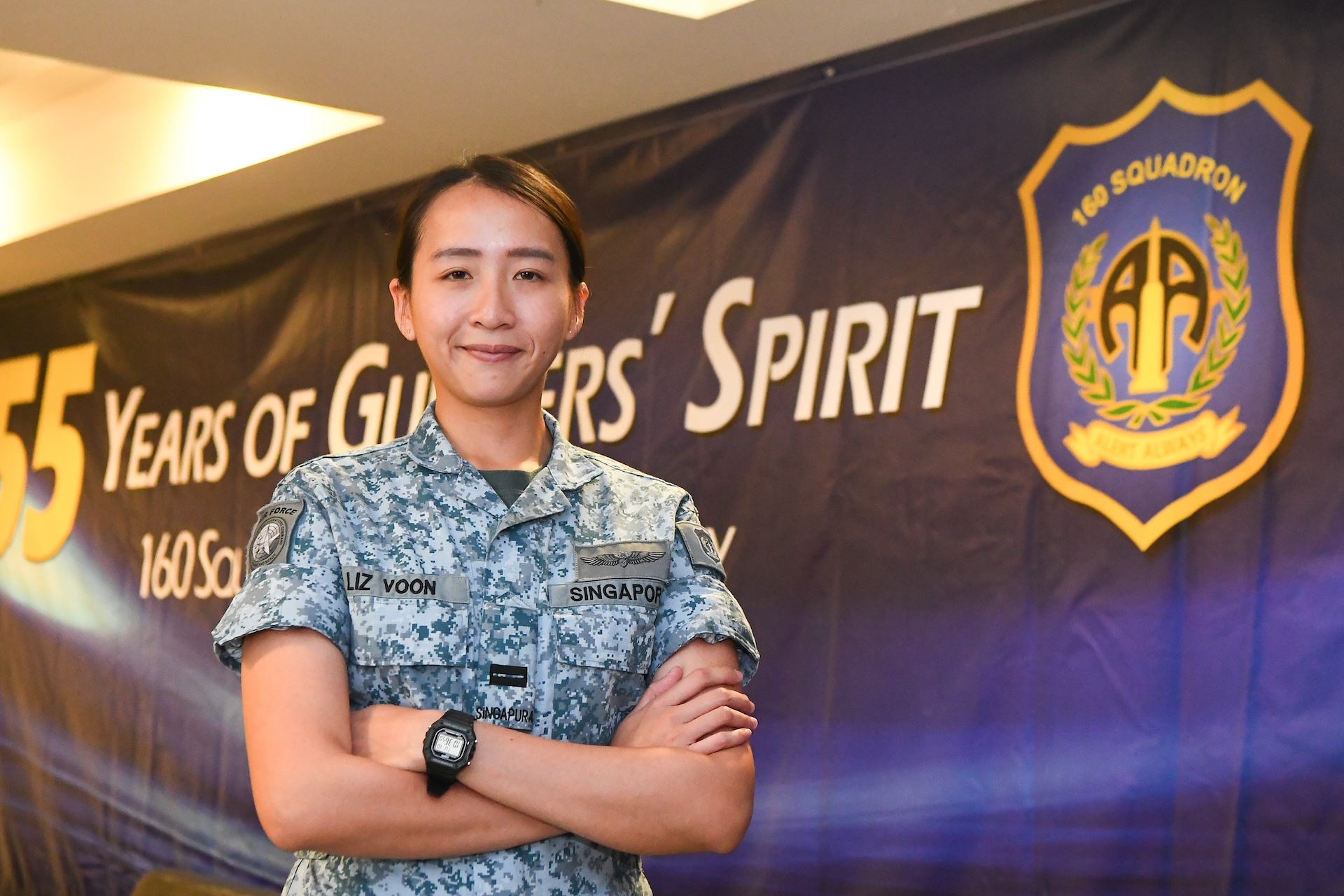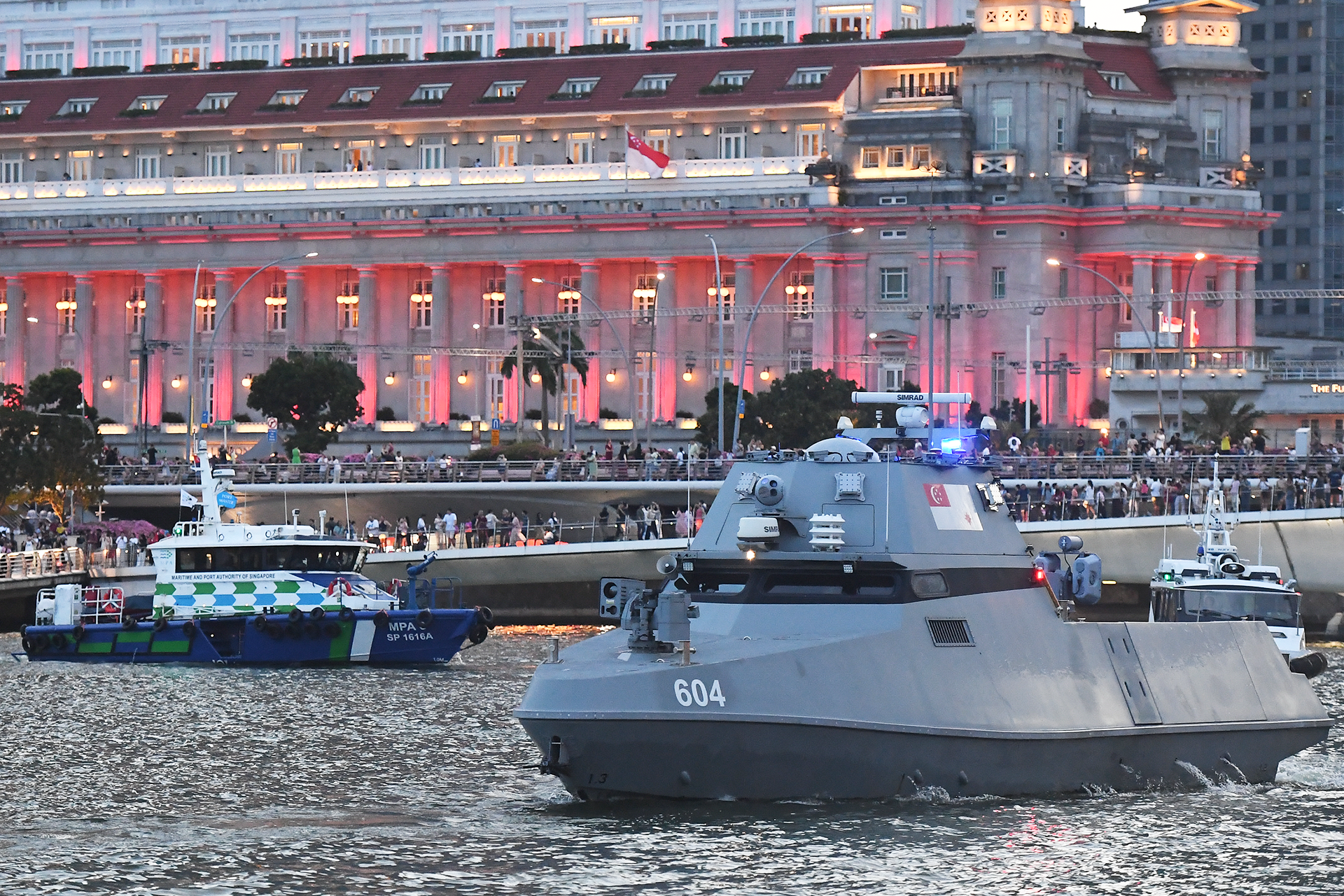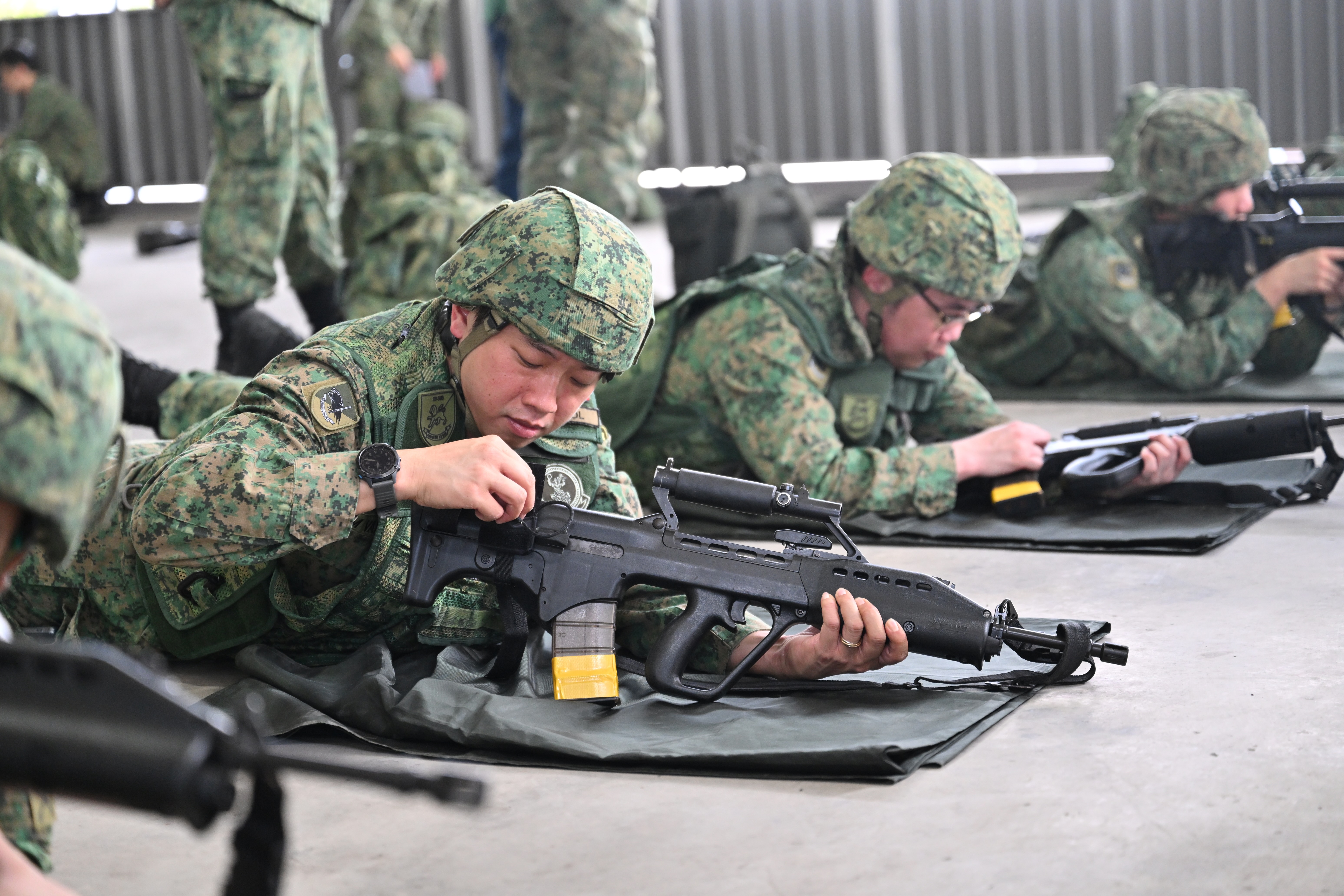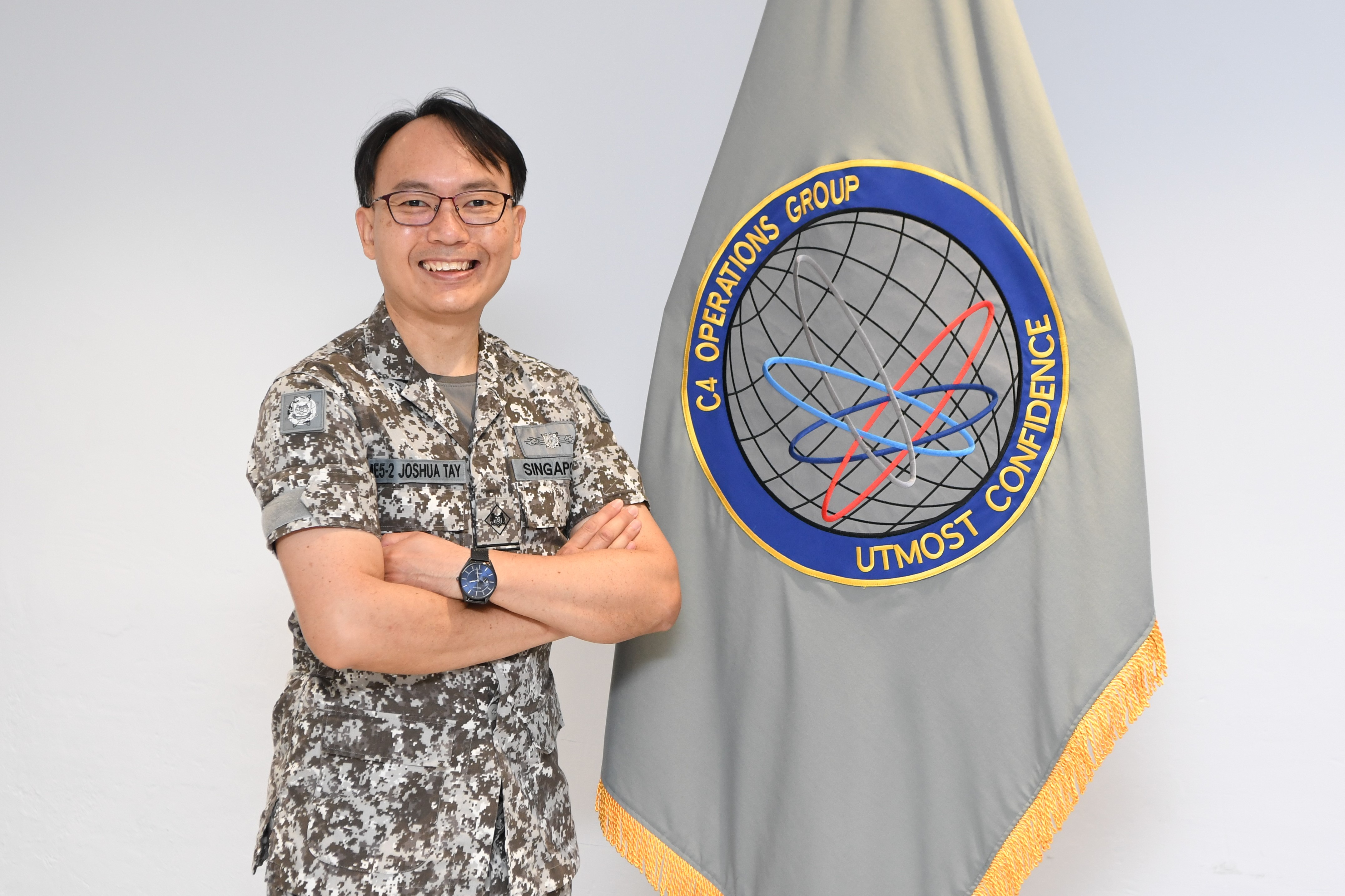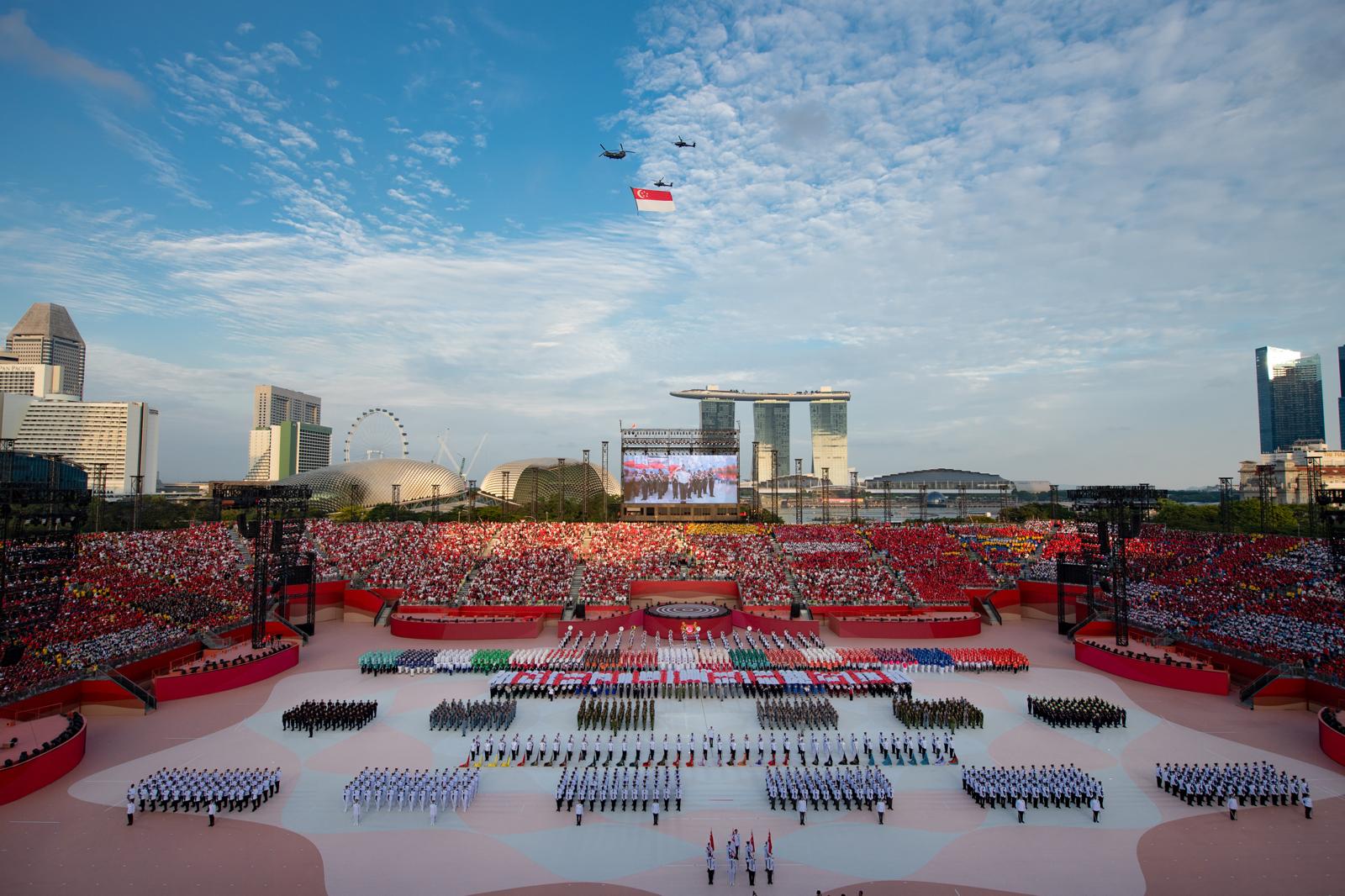SINGAPORE, US IN BILATERAL MOTORISED INFANTRY EXERCISE
PHOTO // Teo Jing Ting and courtesy of Army Information CentreFrom Fort Irwin, California
In the dead of the night, five soldiers were taken out by enemy forces. A plan was quickly formed and the rest of the troops executed a thorough search of the vicinity. Four enemy soldiers were discovered and captured, along with their stash of weapons which include anti-air weaponry.
This was just one of the scenarios that soldiers from the 5th Battalion, Singapore Infantry Regiment (5 SIR) were put through while taking part in Exercise Lightning Strike 2017 in the United States (US) from 9 to 31 Jan.
Held at National Training Centre (NTC) in Fort Irwin, California, the bilateral exercise involved 139 Singapore Armed Forces (SAF) soldiers and close to 5,000 troops from the US Army Pacific. The assets deployed included 12 Terrex Infantry Carrier Vehicles (ICVs) from the SAF and about 300 Stryker Combat Vehicles from the US - the first time they participated in an exercise together.
Being prepared
Throughout their training at the NTC, the 5 SIR soldiers were kept on their toes as they fought their way through unforeseen enemies and eventually captured one of the "war-torn" cities. The unit was put through six missions and travelled a total distance of 450km.
Said 3rd Sergeant (3SG) Christopher Ho, who was part of the team that captured the four men: "We don't know when the next attack is coming and we are just getting as prepared as possible."
The 20-year-old Full-time National Serviceman (NSF) added that since taking over the city, the troops had been clearing the area of threats and ramping up security.
For 2SG Braxton Kunasegaran, dealing with the simulated riots was an experience he would never forget.
"The riots are very intense. Flares are thrown and there's a lot of shouting going on. During the riots, the Terrex ICVs are placed in front as a show of force (and) slowly move forward to turn them (the rioters) back," said the Terrex ICV vehicle commander.
With the NTC being four times the size of Singapore, it was a great opportunity to test the limits of the Terrex ICVs. However, with limited refuelling points, the 21-year-old NSF noted that he always had to find a balance between using and conserving fuel.
Travelling on the open terrain also meant that they were vulnerable to attacks for extended periods. Such attacks could happen up to several times in a day and when they happen, 2SG Kunasegaran said that the troops would scramble to find where the enemies are.
"The first person who spots where the assaults are coming from will sound off the alarm. We'll then decide what position or formation to launch a counter-attack," he explained.
Aside from the ever-present threat of attacks, one major challenge that the troops faced was the harsh weather. Temperatures in the desert can drop below zero at night and coupled with the strong winds and rain, all the troops have is one another for comfort.
"Cold and wet is a terrible condition to be living in. That being said, I'm heartened by the determination and perseverance that I've seen my guys displayed and how they've pushed through the ordeals," said 3SG Ho, who is section commander for one of the platoons.
Raining fire
The troops also had the opportunity to conduct live-firing exercises with the Terrex ICVs and the Stryker Combat Vehicles on the mountainous terrain.
While it was thrilling, 2SG Kunasegaran admitted he had his fair share of challenges while firing, including having to constantly adjust his shots due to the strong wind. Nevertheless, he counts them as learning points.
"This exercise has really benefitted me a lot It helped me practise how to judge the distance of the fire, how far off I need to aim, and how much the bullet will curve (due to the wind)," he said.
"I'm also excited to share this experience with my peers in Singapore as it will enable them to better visualise how an actual defence and live-firing would be."
Officer Commanding of 5 SIR, Captain (CPT) Ng Eng Ping, had nothing but praises for his troops, who were mainly NSFs.
The 28-year-old said: "You can't prep for a terrain, weather and an enemy like this. A strong sense of discipline, camaraderie and fighting spirit - that's what got them through16 days of outfield and 15 nights in the cold. This is no small feat and I'm very proud of every single one of them."
Headquarters 3rd Singapore Infantry Brigade Commander, Colonel (COL) Lee Yi Jin, also noted that the US troops were very impressed with the SAF. The 36-year-old, who was an observer throughout the exercise, said that the US forces kept throwing 5 SIR with missions of increasing difficulty once they saw that the unit was capable and up to the tasks.
He said: "The (SAF) troops were really fighting shoulder-to-shoulder with our US counterparts. There was mutual confidence in each other's capabilities."
Having a dedicated opposing force in the exercise made it all the more enriching, added COL Lee.
"It forces them to think, be very adaptive and respond to all kinds of situations. They never knew what was coming but they still executed the missions very well.
"They have really done the Army proud."
